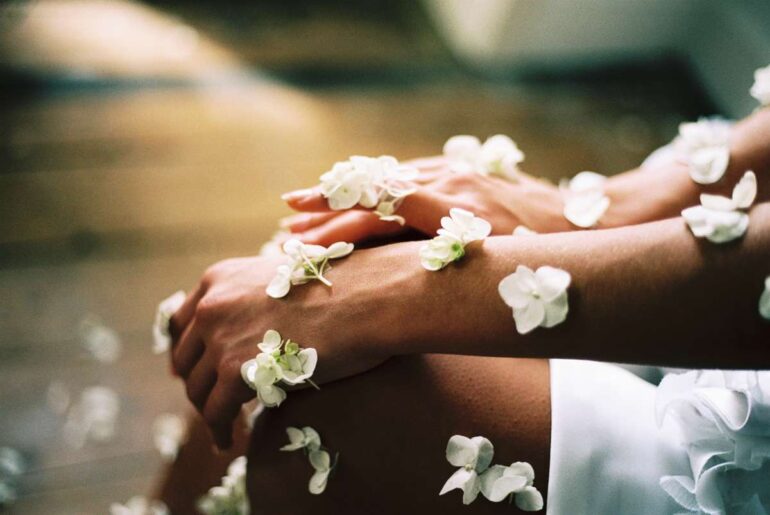We live in a world where we are exposed to too much stress & pollution. Also, we do consume food that is less nutritious and unhealthy. Due to these reasons, our body produces harmful toxins. So, it is important to detoxify our bodies to remove all these toxins.
How can we detoxify our bodies? What is the process for detoxification?
Ayurveda is the world’s oldest holistic healing system that guides us in choosing a proper diet, living habits, and exercise to maintain proper balance in our body, mind, and consciousness.
Ayurveda recommends Panchakarma as a detoxifying therapy that helps in maintaining mental and physical hygiene and balance. Panchakarma is a Sanskrit word that means “Five Actions,” “Five Treatments,” or “Five Therapies.”
Let us now understand more about Panchakarma, the process, therapies, benefits, and much more.
What is Panchakarma?
Panchakarma is a process of purifying the body by removing all the toxic materials left by the disease, poor nutrition, and environmental toxins. Our body has a connatural ability that removes these waste materials. The waste materials are called ama in Ayurveda. Ama is a foul-smelling, sticky, harmful substance that has to be eliminated from our bodies.
The Panchakarma treatment removes excess doshas and eliminates the ama out of our system. This process distills the tissues more effectively. It is a seasonal treatment given when a person feels out of balance or is experiencing illness. The person experiencing the Panchakarma therapy should stay in the Panchakarma facility for 5-21 days until the completion of the treatment.
Panchakarma Therapies
Panchakarma therapy is a five-step process to cleanse the body inside and out. We should follow these five steps to attain a completely healthy and purified body.
Let us have a look at the five-step process of Panchakarma Therapy:
- Basti: Herbalized oil enemas
- Nasya: Nasal irrigation
- Vamana: Therapeutic vomiting
- Virechana: Purgation
- Raktamokshana: Bloodletting
Panchakarma Treatment
For a panchakarma treatment, the person is recommended to stay in-house. There are three main components of the panchakarma process:
- Poorva Karma (Pre-panchakarma phase)
- Pradhana Karma (Principle phase)
- Paschat Karma (Post Panchakarma phase)
Poorva Karma
Before the Panchakarma treatment begins, the body has to be purified through the oileation process. Oleation is the process of oiling up the inside and outside of the body. The person undergoing the treatment should maintain a proper diet during this procedure.
They only have to eat Kitchari (spiced lentils and rice) or simple, vegetarian meals. They should follow this diet for a week ahead of time. The person should avoid eating meat, excess travel, anger, stress, and other toxic food and experiences for a month earlier.
Pradhana Karma
Now that the person is prepared for the treatment, he should focus on the elimination of toxins. The elimination process is nothing but the detoxification process. In this process, the five therapies mentioned earlier will take place. Let us explore more about these therapies:
Vamana:
The person is given oileation and fomentation treatment for a few days in this treatment. Fomentation is the process of removing toxins from the body through sweat. This process enables vomiting and hence eliminates the toxins and other poisons from the body tissues.
Basti:
It is a treatment in which ayurvedic therapy is given through medicines or natural decoctions like oils, ghee, or milk through an enema. Basti therapy helps in fighting against various diseases like piles, constipation, and arthritis.
Nasya:
Nasya therapy helps clear the sinus and drain excess mucus. The treatment cleans the whole head area and helps to vanish cerebral pain, headache, hair issues, sleep disorder, neurological disorders, sinusitis, chronic rhinitis, and respiratory ailments.
Virechana:
Virechana treatment cleans the toxins in the body through the bowels. Even in this treatment, the person undergoes the oileation and fomentation process. This treatment is mainly for pitta-dominated conditions, such as herpes zoster, jaundice, colitis, celiac infection, etc.
Raktamokshana:
Raktamokshana purifies the blood and is viable against ailments caused due to impure blood. This process helps in getting rid of diseases like psoriasis, pigmentation, dermatitis, and many others.
Paschat Karma (Post Panchakarma)
Post Panchakarma process is the rejuvenation phase. Ayurveda emphasizes one’s digestive system to prevent unhealthy accumulation. To accomplish this phase, the person should practice yoga, meditation, and pranayama.
In the post-panchakarma process, all the impurities vanish from the body. The person feels energized and gets the motivation to make healthier choices.
Panchakarma Therapy Days
On D-day, once the person is up, he should practice yoga and meditation. Later, drink a cup of spiced tea with cumin, ginger, cardamom, fennel seeds, and other spices and herbs. The first treatment of the day begins with an oil massage for the back, head, or naval.
Then he needs to take a steam bath to release toxins. Later, he can have kitchari, lentils, and rice in healing spices for lunch. After this, he can walk around to experience the beauty of nature, or he can sit and meditate. Technology or any exercise is strictly prohibited.
The person should then undergo an enema treatment. In this treatment, he has to gobble a light dinner of more kitchari or cooked vegetables and rice. To end his day, he can read or meditate and go to bed for another healing day.
Panchakarma Benefits
Those who are healthy can experience panchakarma therapy to maintain and enhance cellular function, while those suffering from any disease can use this therapy as a curative measure. Panchakarma therapy has a wide range of benefits. To list a few:
- Purifies the body to eliminate toxins.
- It helps restore metabolic strength.
- Enhances the immune system.
- Reduces stress and improves diet.
- Reduces weight.
- Provides deep relaxation.
- Improves complexion.
- It enhances the strength of the digestive system.
Panchakarma is a sophisticated science of purifying the body and mind. Ayurveda depicts that if a person undergoes Panchakarma at seasonal changes helps relax the mind, enhances digestive systems, and increases metabolism.
To have optimal health conditions, the person should maintain a strong digestive system and eliminate harmful toxins from the body. Panchakarma detoxifies the body and enhances inner balance and energy.






